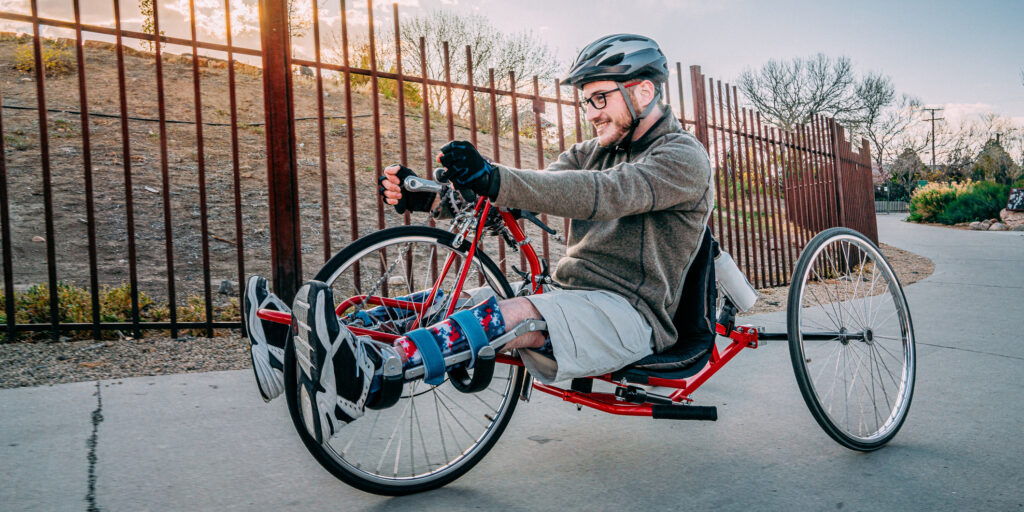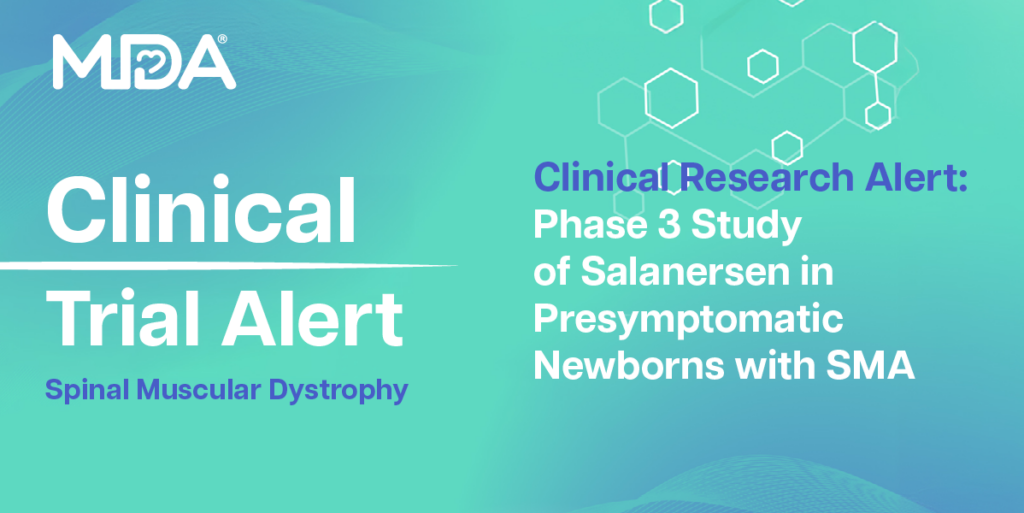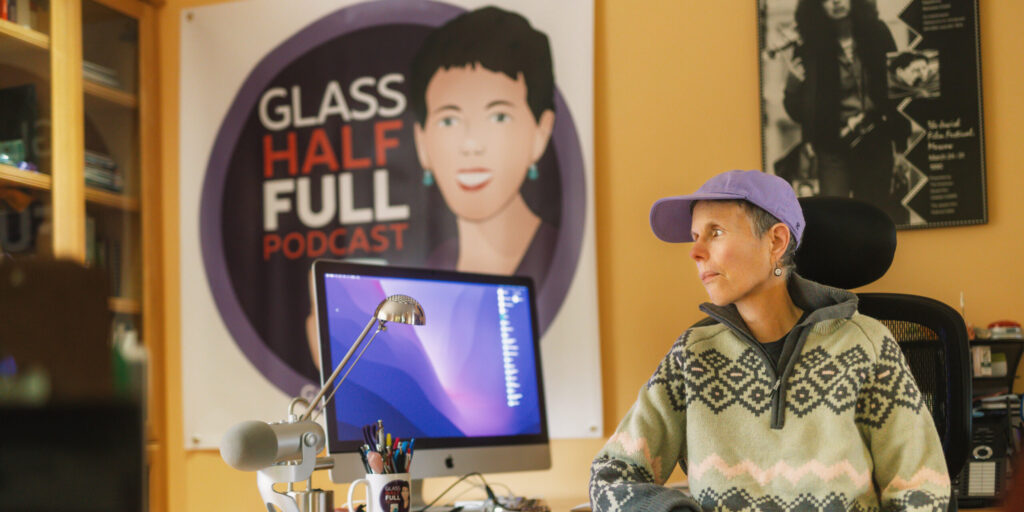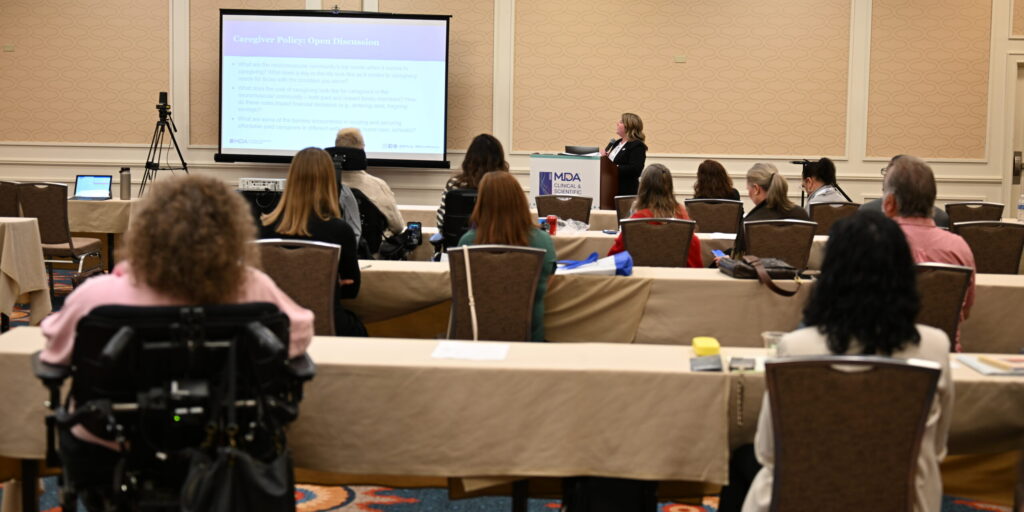
Adaptive Exercises for People with Neuromuscular Diseases
By Annika Tourlas | Friday, August 16, 2024
Living with a neuromuscular disease presents unique challenges, but exercise can play a crucial role in managing symptoms and improving independence. Staying active can provide numerous physical and mental benefits, like enhanced muscle strength and reduced anxiety. With an understanding of what works best for your body and your abilities, you can become active from the comfort of your own home, participate in exercise activities at your local school, gym, or pool, or play an adaptive sport.
Benefits of exercise
Regular physical activity is essential to maintain overall health, especially for those living with neuromuscular diseases.
Exercise can help:
- Reduce pain. Low-impact activities can reduce inflammation and stretch the stiff muscles or joints that contribute to chronic pain and fatigue.

Kathryn Mosher is a pediatric physiatrist.
- Maintain motor function. Targeted motor activities can enhance coordination and fine motor skills, sometimes prolonging independence in daily living.
- Prevent muscle deconditioning caused by the diagnosis. Inactivity can lead to rapid muscle loss. Consistent physical activity can help maintain strength and reduce the risk of atrophy.
- Improve balance. Balance-targeted activities with no resistance test your body control, increasing confidence with daily movement.
- Prevent secondary health issues, like contractures and skin-related concerns. Prolonged periods of minimal movement can cause joint and skin impairments like pressure sores.
- Reduce feelings of anxiety or depression. Participating in an activity can positively affect your mood by improving blood flow, confidence, and hormone responses.
“The benefits are multifold,” says Kathryn Mosher, a pediatric physiatrist at Akron Children’s Hospital in Ohio. “In general, exercise is important for everybody. But, for people who have an underlying neuromuscular disease, in some respects, it may be more important because you want to maintain the level of ability that you have as much as possible.”
When living with a disease that causes progressive muscle deterioration, exercise is one of the most valuable tools to help maintain your current level of function. In types of congenital myopathies, for example, exercise can even strengthen your muscles and expand your range of motion.
4 adaptive exercises to try
Understanding the variety of adaptive exercises available can help you choose the most effective and enjoyable activities to incorporate into your routine. These exercises can be tailored to accommodate different levels of mobility, ensuring that everyone can benefit from physical activity.
1. Water aerobics
This activity provides a low-impact setting to work on cardiovascular health and joint mobility while also providing a natural source of resistance. Pool lifts and flotation devices can make it easier for those using assisted mobility devices to join in on this safe and effective exercise.
2. Yoga
Yoga is an effective way to prevent joint stiffness and maintain strength levels. Yoga provides a calm environment to practice gentle stretching and breathing. However, it’s important to steer clear of long-hold poses (holding a pose for longer than 60 seconds) that may be too strenuous on your body.
Adaptive yoga classes and modified movements and poses make this form of exercise accessible to a wide variety of people with different mobility levels. If you want to add yoga to your exercise routine, starting from home with online adaptive yoga classes could be a good fit. You can find free tutorials for adaptive yoga poses on YouTube and on free exercise sites like Fun and Moving. Once you’re comfortable, look for adaptive classes and experienced yoga teachers near you through Yoga Alliance.
3. Seated exercises
Seated exercises are beneficial for everyone. From a seated leg-kick extension to arm circles, these exercises can help stabilize joints and maintain your range of motion. You can find many different seated exercises, as well as other adaptive exercises, through resources such as Fun and Moving.
4. Adaptive sports
Participating in adaptive sports is a rewarding way to gain physical, social, and emotional benefits. Adaptive sports are designed with your capabilities in mind, alleviating the stress of searching for an adaptive setting.
Finding adaptive sports near you can be tricky, but adaptative sports leagues and organizations are a great place to start. Here are some resources to help:
- Challenged Athletes Foundation
- Wheelchair Sports Federation
- American Association of Adapted Sports Programs
- Achilles International
What to know before starting an exercise routine
Before beginning or increasing your exercise routine, talk with a healthcare professional regarding your plans. To ensure that you receive appropriate advice, confirm with your provider that they are familiar with what exercises are appropriate for individuals with your specific diagnosis.
Physical and occupational therapists can share their extensive knowledge of at-home exercises, safe practices, local resources like adaptative gyms, and a comprehensive exercise routine. They can also help you to find the level and amount of activity that works for you.
“You generally just have to avoid going for the burn,” says Vikki Stefans, MD, a pediatric rehabilitation specialist at Arkansas Children’s Hospital. “You can make a muscle weaker by overworking it. I’ve seen that happen. But you should move, you should exercise, you should do what you’re able to.”
How to balance muscle fatigue

Hilary Lott is a physical therapist.
Hilary Lott, PT, DPT, a physical therapist at Providence St. Luke’s Rehabilitation Medical Center and faculty member at Eastern Washington University, uses a general rule of thumb for balancing muscle fatigue and exercise: After a patient completes the first few exercises, she asks if they think they could complete those exercises twice in a row.
If a patient agrees with her prompt, it means the exercise probably is not too fatiguing. Hilary recommends checking in on how the individual feels that day and the following day to assess for tolerance as well. Checking in with yourself as you establish your routine can prevent damaging fatigue. Avoiding muscle fatigue is key to developing a safe and effective routine. If an exercise is causing any pain, stop the exercise immediately and address the pain with your trusted healthcare provider.
“Everybody has a gas tank of energy or muscle endurance throughout the day,” Hilary says. “Everybody’s gas tank is a different size, and we have to make sure that we don’t get too empty before the end of the day.”
By setting realistic goals and integrating a variety of adaptive activities, you can find a fulfilling way to stay active, engaged, and safe.
Next Steps and Useful Resources
- Find physical therapist-approved exercises for specific diseases in At-Home Physical and Occupational Therapy guides.
- Learn about the many ways people in the neuromuscular disease community stay active.
- Stay up-to-date on Quest content! Subscribe to Quest Magazine and Newsletter.
Disclaimer: No content on this site should ever be used as a substitute for direct medical advice from your doctor or other qualified clinician.




